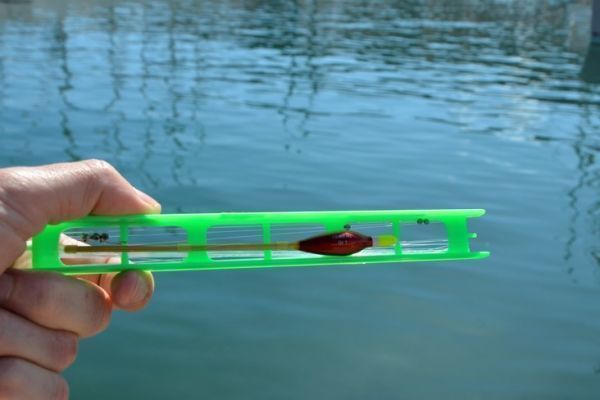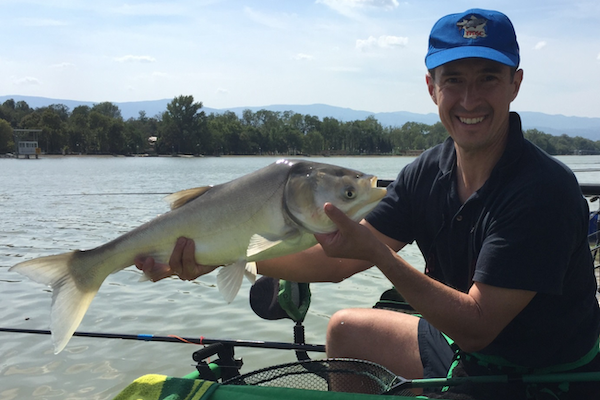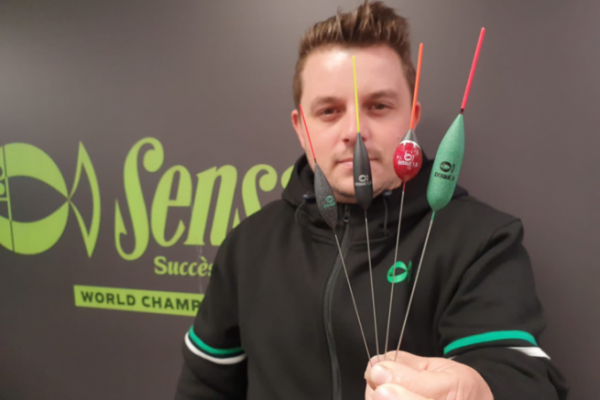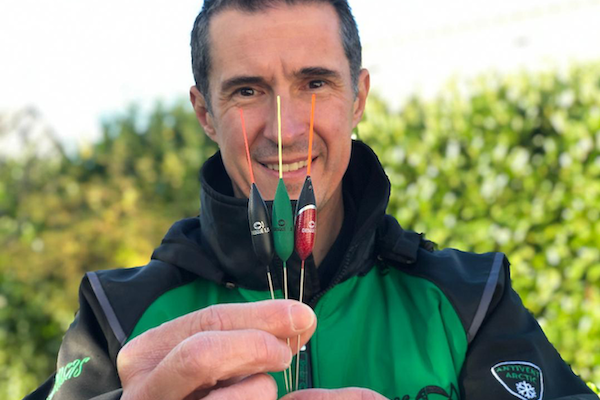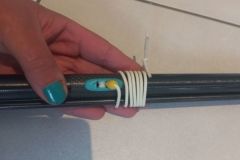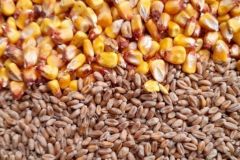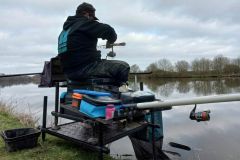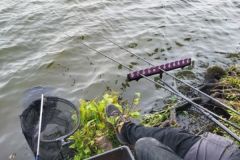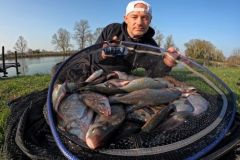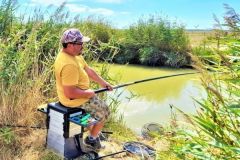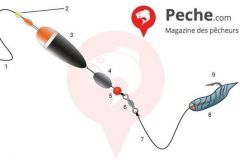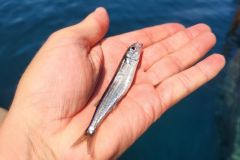Its design
Usually made from balsa wood or polyurethane foam, the float body is usually fitted with an eye located close to the tip for optimum line control.
There are also some floats with "through" or "pass-through" line which are best suited to intensive fishing with large-diameter line bodies (carp, catfish, etc.), as heavy and/or repeated striking often tends to weaken the float body.
Having said that, even more than the design of the float, it's the shape of the float that's most important to me, as it will deliver fundamental mechanical properties that will affect both the behavior of the float and the presentation of the bait.
A simple rule to follow
With so many different shapes of float available on the market, it can be hard to see the advantage of using one type of float over another. Here's a rule to keep in mind: the stubbier the float, the more stable it will be. In particular, the more stable the float, the greater the immobility of the bait, which is often the key to catching attractive fish such as breams.
On the other hand, the more tapered the float, the more sensitive it will be. This implies that the bait will move at the slightest wobble of the float (generally of interest to the smallest fish), which may be generated by the angler himself, by the bottom current that may be in the layer of water being fished or by the jerks of the line produced on the surface (such as the presence of ripples on the surface or the influence of the wind on the streamer, for example).
With this in mind, there are 4 main families of floats to consider.
1) The tapered shape
The first shape includes all floats known as tapered or elongated, of which my preference is for the "carrot" shape, more commonly known as the "dart" by our fishing friends in Northern France. Great specialists in the use of this type of float, I don't know a single angler from the "North" who doesn't consider this shape simply indispensable for all roach fishing, which is very common in canals (small and large) as well as in ponds in the rest of France.
With its short, large-diameter keel, this type of float is not only quicker to set up, but also, and above all, more sensitive to sinkage. Be careful, however, not to use this float if the current is too strong, or you may find yourself unable to control the line properly.
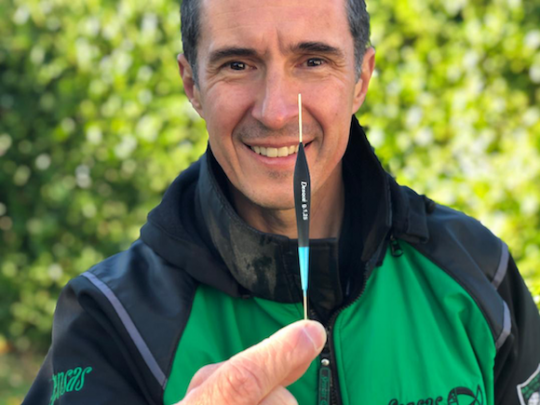
2) The stocky shape
This second family includes all floats whose main purpose is to obtain a high level of stability for the line and therefore for the bait on the bottom. This "ball" shape should be preferred for all fishing in rivers and navigable canals where there are currents, but also anywhere else where the wind may cause water movements, such as in exposed ponds.
As this shape gives the line great stability, it is also suitable for all fishing where you need to drag the bait along the bottom. Particularly formidable on big roach, bream and other pretty specimens, this float shape is simply indispensable in a basket.
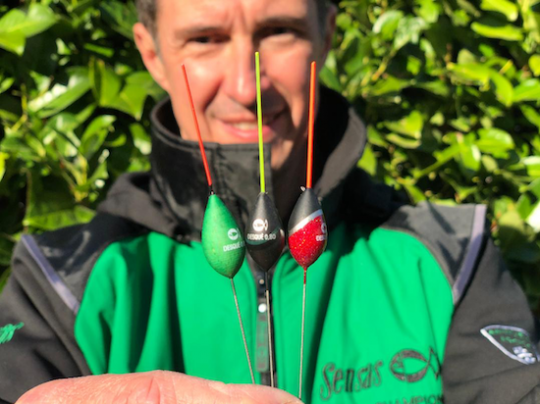
3) The "intermediate" form
Let's move on to the 3rd family, which could be described as "intermediate" (but no less important). It includes all floats that can be used on most of the courses in France, i.e. slow rivers, canals (whether navigable or not) and, above all, ponds (deep or not).
This family includes all teardrop-shaped floats that combine stability and sensitivity. The best-known shape in this family remains the "bottle" shape, like the "mini Roach" float or the renowned "Padova" from Sensas.
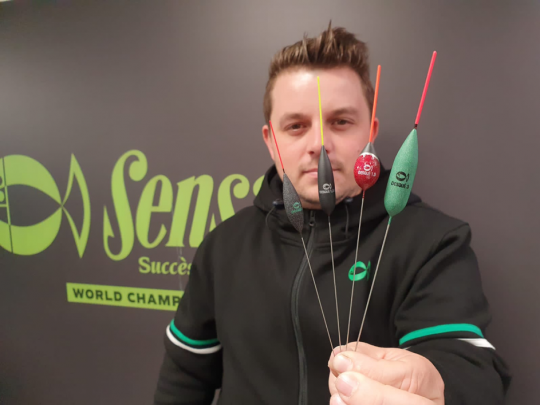
The bottle shape, like the Sensas "Padova" and "Chat Classic" (2nd and 4th floats from left), represents one of the favorite shapes of Alexandre Caudin, member of the French team and reigning French Champion.
4) The "profiled" shape
Finally, there's one last family of floats that's rather atypical in that their shapes don't correspond to any other. I'm referring to the "flat" float family. They have been designed to generate as little resistance as possible in the current and are de facto exclusively intended for drag fishing.
Rivers and canals subject to surges are the main routes where they sometimes make a difference. The face of the float exposed to the current being reduced, this shape allows the line and therefore the bait to be immobilized on the bottom, while reducing by about a third the weight of sinkers needed to achieve this. This is a considerable advantage when it comes to deceiving larger fish.
It may be possible to use this type of float in a pond, but only if a constant drift has been established. For greater ease of use, I recommend you combine this type of float with a rod rest to ensure perfect line immobility. A panel of floats spaced one gram apart should allow you to easily cope with any situation.
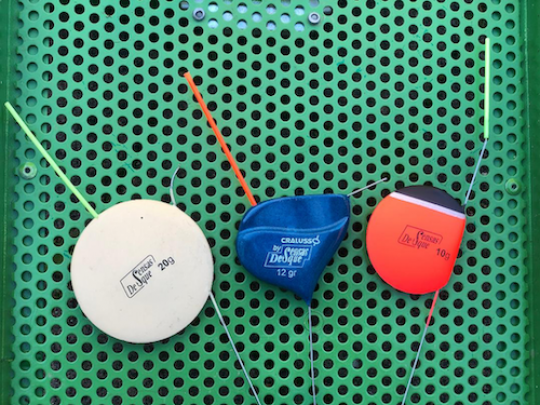
By associating each of the float families described above with the various conditions you'll have to deal with, you should now be able to create beautiful floats without too much difficulty.

 /
/ 

